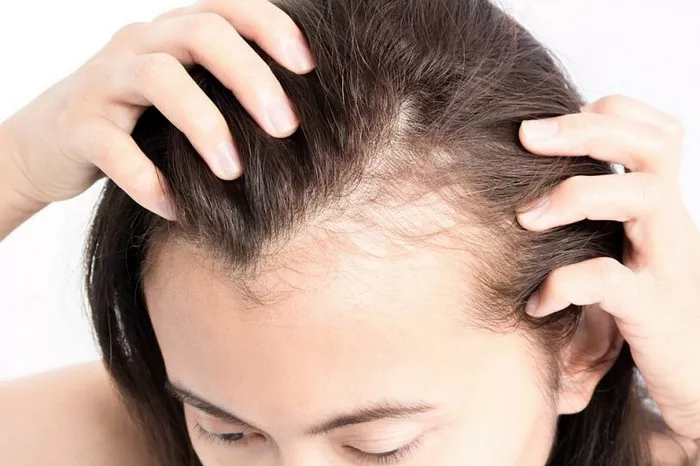Hair growth is a dynamic process influenced by various factors such as genetics, health, and lifestyle. For many individuals, recognizing the signs of new hair growth can be an encouraging milestone in their journey towards healthier, fuller hair. Whether recovering from hair loss or simply aiming to enhance hair thickness and vitality, understanding the indicators of new hair growth is essential. In this comprehensive guide, we delve into the subtle yet significant signs that signify the emergence of new hair strands, empowering individuals to monitor their progress effectively.
Understanding the Hair Growth Cycle:
Before delving into the signs of new hair growth, it’s crucial to grasp the basics of the hair growth cycle. Hair growth occurs in three distinct phases:
1. Anagen Phase: This is the active phase of hair growth where the hair follicle is actively producing new hair. The duration of this phase can vary from a few years to several years, depending on genetic factors and individual health.
2. Catagen Phase: Following the anagen phase, hair enters the catagen phase, which is a transitional period. During this phase, the hair follicle shrinks and detaches from the dermal papilla, signaling the end of active growth.
3. Telogen Phase: The telogen phase is the resting phase of the hair growth cycle. Hair follicles remain inactive during this stage before eventually shedding and making way for new hair growth.
By understanding these phases, individuals can better interpret the signs of new hair growth and distinguish them from normal shedding or dormant hair follicles.
Signs of New Hair Growth:
1. Visible Sprouts or Baby Hairs:
One of the most palpable signs of new hair growth is the emergence of tiny, wispy strands known as baby hairs. These delicate hairs often appear along the hairline or on the scalp, indicating that dormant follicles have reactivated and begun producing new hair. While initially subtle, baby hairs gradually gain length and thickness over time, contributing to a fuller head of hair.
2. Reduced Hair Shedding:
As new hair growth gains momentum, individuals may notice a decrease in hair shedding. While it’s normal to lose a certain amount of hair daily, excessive shedding can indicate underlying issues such as stress, hormonal imbalances, or nutrient deficiencies. Observing a decline in hair fall is a positive indication that new, stronger strands are replacing those that have shed.
3. Increased Density and Volume:
With continued new hair growth, individuals often experience a noticeable improvement in hair density and volume. Sparse areas may become filled in, and overall hair thickness may increase, resulting in a fuller and more vibrant mane. This increase in density is a testament to the efficacy of treatments or lifestyle changes aimed at promoting hair growth.
4. Changes in Texture or Color:
Newly grown hair may exhibit subtle differences in texture or color compared to existing hair. For instance, emerging strands may appear finer or coarser than the surrounding hair, or they may display a slightly different hue. These variations are normal and indicate the rejuvenation of hair follicles, which may produce hair with slightly altered characteristics.
5. Itchiness or Tingling Sensation:
Some individuals may experience mild itchiness or a tingling sensation on the scalp as new hair follicles sprout. This sensation, often described as “itchy scalp,” is a common occurrence during the early stages of hair regrowth. It is typically transient and subsides as the hair follicles mature and acclimate to the growth process.
6. Decreased Scalp Visibility:
As new hair growth progresses, the scalp becomes less visible, especially in areas where hair was previously sparse. This reduction in scalp visibility is a visible manifestation of increased hair density and coverage, indicating successful regrowth and rejuvenation of the hair follicles.
7. Strengthened Hair:
Newly grown hair tends to be stronger and more resilient than damaged or weakened strands. As a result, individuals may notice a reduction in hair breakage and split ends, indicative of healthier hair overall. This increased strength reflects the rejuvenation of the hair follicles and the production of new, robust hair shafts.
8. Slower Hair Growth in Other Areas:
Interestingly, as new hair growth becomes more pronounced in targeted areas, individuals may observe slower hair growth in other regions of the body. This phenomenon, known as “compensatory growth,” occurs as the body redistributes resources towards promoting hair growth in areas previously affected by thinning or loss.
Conclusion:
Recognizing the signs of new hair growth is an important aspect of hair care and restoration. Whether addressing hair loss, promoting thicker hair, or simply maintaining overall hair health, monitoring these indicators enables individuals to track their progress and evaluate the effectiveness of treatments or lifestyle modifications. By understanding the nuances of the hair growth cycle and observing subtle changes in hair density, texture, and scalp condition, individuals can embark on a journey towards healthier, more vibrant hair with confidence and optimism.


